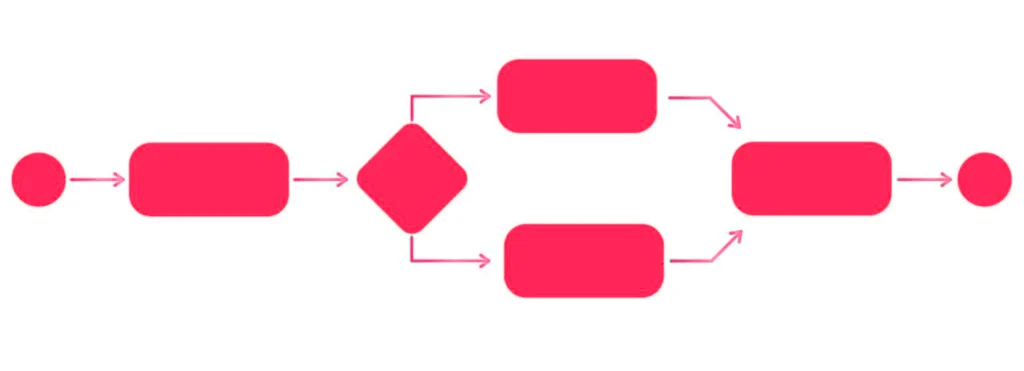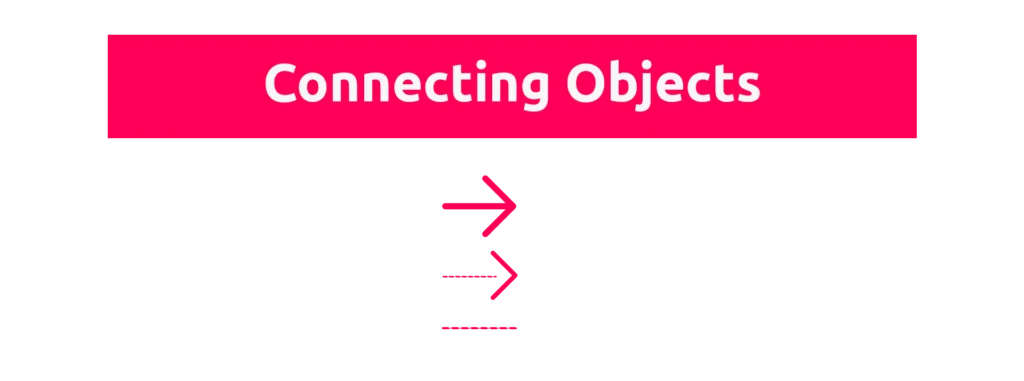Imagine drastically reducing operational errors and eliminating frustration caused by unclear daily procedures in your company. With BPMN, every team member gains a clear understanding of their responsibilities within a process, making business management much more efficient.
Managing a business is like coordinating a complex puzzle—each piece must fit perfectly. Business leaders must be skilled at organizing these pieces and ensuring that everything operates smoothly.
If one part is not functioning properly, the entire puzzle can be affected. To facilitate this process, BPMN serves as a guide that shows how all the pieces connect.
In a competitive market, companies looking to stand out must optimize their business processes and ensure efficiency. That’s why BPMN is an increasingly relevant tool in today’s business landscape.
By using BPMN, professionals can visualize and understand business processes in a clear and structured manner, helping to identify opportunities for improvement and optimization.
Want to learn more? Keep reading!
What is BPMN and what is it used for?

BPMN, or Business Process Model and Notation, is a standardized methodology for modeling business processes. It provides a graphical notation for specifying these processes, making them easier to understand and share across different teams within an organization.
In other words, BPMN is a universal standard for visually representing processes through diagrams. This notation consists of a set of symbols and guidelines that enable businesses to model workflows at different levels of detail.
For example, consider a company’s vacation request process: BPMN allows this workflow to be described in a clear and universal way using symbols such as circles, rectangles, and arrows.
Each step—from submission to approval and record-keeping—is mapped visually, making it easier for all stakeholders to understand and optimize the workflow.
BPMN was initially developed by the Business Process Management Initiative (BPMI) and has been managed by the Object Management Group (OMG) since 2005.
This international consortium ensures that BPMN diagrams can be efficiently shared in a standardized format across various modeling tools.
What’s the difference between BPM and BPMN?
Business Process Management (BPM) refers to the comprehensive discipline of managing business processes. It includes identifying, modeling, executing, monitoring, and continuously optimizing organizational workflows to achieve strategic objectives.
Meanwhile, BPMN is both a technological and methodological tool that supports BPM initiatives. BPMN is a visual language designed to model and standardize process workflows, ensuring clarity and efficiency.
While BPM is a broader management discipline, BPMN is one of its key tools.
Why choose BPMN?
There are various process modeling notations, and choosing the right one depends on an organization’s specific needs.
For example, Unified Modeling Language (UML) is widely used for system modeling but is not specialized in business process workflows. This limitation prevents many companies from applying it effectively in process management.
On the other hand, while traditional flowcharts are a common visualization tool for process design, BPMN offers a more detailed and structured approach that meets the needs of businesses looking for deeper process optimization.
Key advantages of BPMN:
- Comprehensive: Can model simple to highly complex business processes.
- Flexible: Adaptable to various industries and business needs.
- Complete: Covers all aspects of process workflows.
- Visual clarity: Enhances communication and understanding across teams.
- Automation-ready: Supports business process automation, improving efficiency and productivity.
Essential BPMN elements
Each BPMN symbol represents a specific event or action within a process.
The latest version, BPMN 2.0.2, includes approximately 100 different symbols, offering flexibility in modeling diverse workflows. Below are some of the fundamental BPMN elements:
Flow Objects
These elements define process behavior and are divided into three categories:
1. Activities: Actions executed within the process, represented as rounded rectangles.
- Human Task: Performed manually by an employee.
- Service Task: System integrations.
- Send Task/Receive Task: Sending or receiving messages.
- Manual Task: Performed without system automation.
- Script Task: Runs a sequence of commands.
- Business Rule Task: Implements business rules for decision-making.
2. Events: Represent temporal aspects or process states. Identified by circles and categorized as:
- Start Event: Marks the beginning of a process.
- Intermediate Event: Occurs during a process and influences the next steps.
- End Event: Signals process completion or termination.
3. Gateways: Define decision points and process divergence. Represented by diamonds, key types include:
- Exclusive Gateway (Data-based/Event-based).
- Inclusive Gateway.
- Complex Gateway.
- Parallel Gateway.
Connecting Objects

These elements link process components:
- Message Flow: Represents communication between different entities.
- Sequence Flow: Defines process direction.
- Association: Connects additional information to elements.
Swimlanes
BPMN includes swimlanes to organize process responsibilities:
- Pools: Represent major business entities or departments.
- Lanes: Divide pools into sections for different roles.
Artifacts
Artifacts add detailed information to BPMN diagrams:
- Groups: Organize related elements.
- Annotations: Provide explanatory notes.
- Data Objects: Represent information inputs and outputs.
Business benefits of BPMN
- Improved communication and process clarity
BPMN provides a universal language for business processes, eliminating misinterpretations and ensuring clear communication across teams and stakeholders. - Easier identification of bottlenecks
By offering a detailed visual representation, BPMN helps organizations pinpoint inefficiencies, delays, and areas for improvement. - Enhanced operational efficiency and cost reduction
With BPMN, companies can streamline workflows, eliminate redundant tasks, and optimize resource allocation—leading to improved productivity and reduced costs.
How to implement BPMN in your business
The implementation process can be broken down into four main steps:
- Define the scope: Identify the process boundaries, participants, and objectives.
- Gather requirements: Collect relevant data through interviews, workshops, and document analysis.
- Model the process: Use BPMN software to design workflows with standardized symbols.
- Validate and refine: Obtain feedback and make necessary adjustments to optimize process performance.
Implementing BPMN requires technical expertise and the right tools to ensure effective process modeling.
BPMN tools for business process management
To fully leverage BPMN, businesses must utilize specialized software that facilitates process design, automation, and optimization.
With Scoreplan, you can create BPMN-based process diagrams, ensuring better workflow management. The platform enables businesses to centralize and refine their processes, leading to more strategic and data-driven decision-making.
By adopting BPMN within Scoreplan, organizations enhance communication, workflow efficiency, and process visibility—key factors in achieving business success.
BPMN is a powerful tool for business process management, offering a structured, standardized way to document, analyze, and optimize workflows.
If you’re looking to enhance your business process efficiency, BPMN should be a top priority.
➡️ Ready to experience BPMN in action? Request a free Scoreplan demo today!




